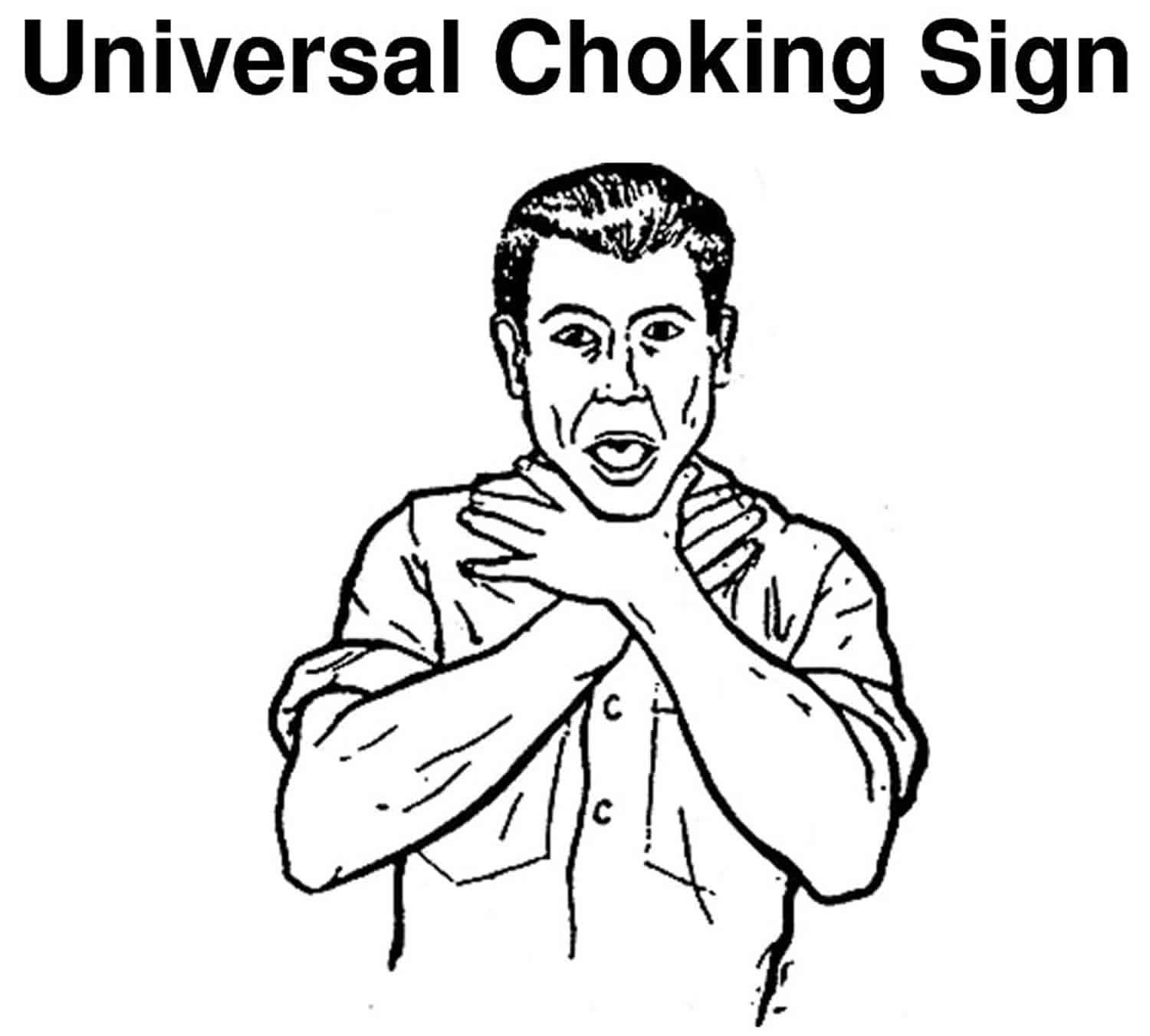What is the first step we would take when providing care for a person that is experiencing a life-threatening event.
Check the scene to make sure it is safe for you provide care.
What does CPR stand for?
Cardiopulmonary resuscitation
Infant CPR consist of how many compressions and breaths?
30 compressions 2 breaths
Applying butter or mustard and some Vaseline is just as effective as applying cool water and a loose bandage when treating a burn.
Myth: Cool water to stop the burning and covering a burn with a loose bandage will help keep the area clean while it heals.
I'm sorry but Grandma was wrong :-(
Show us the universal sign for choking..

You don't have to wash your hands if you wore gloves
You should always wash your hands even when you wear gloves. Germs are tricky like that..
If a person has life threatening bleeding and their heart has stopped, what type of care do they need 1st?
CPR-1st
Get the heart going again then treat life threatening bleeding.
True or False:
When giving breaths to an infant during CPR you must cover their nose and mouth with your mouth while tilting the head back.
True
Fact or Myth:
You do not have to give breaths during CPR, Compressions alone will improve a person's chances of survival.
Fact
Remember: Breaths are optional
Demonstrate how you would help a pregnant lady that is chocking.
When blood flow to part of the brain is interrupted by a blood clot or by bleeding from a vessel resulting in the death of brain cells.
What is a stroke.
How can you gauge if someone had a stoke?
Remember FAS:
Facial weakness, Arm/ grip weakness, Speech disturbance.
In order to ensure CPR can be effective you must ensure that the person is....
Lying on their back on a firm surface.
True or False:
When a small child is choking it is best practice to give the child something to drink to see if they can wash it down before providing care.
False:
Kneel and Apply 5 back blows and 5 j-shaped thrusts repeatedly until object is ejected.
When caring for a person who is choking, you should always sweep the mouth with your pinky to clear debris from the person's mouth no matter what.
Myth:
You should ONLY sweep for debris when you can visibly see an object in the persons mouth. Doing a blind sweep can cause you to push objects further in a person's mouth prolonging choking.
Demonstrate how to wrap a wound after bleeding has stopped.
Types of burns that require immediate attention.
What is a Burn.
Burns that extend through several layers of skin, cover a huge percentage of the body, infant burns, elderly burns, burns the impede bodily functions such as breathing, inhalation of chemicals, burns that are a result of an explosion.
If you break a person's ribs while doing CPR, should you stop CPR?
NO, Broken ribs is a common injury when receiving CPR care. The ribs protect the heart so it makes sense that they might break. Ribs can heal! Keep going!!!
+1pt bonus: When should you stop CPR care?
True or False:
When doing CPR on a child, compression should be at least 2 inches deep.
True
Infants: 1.5 inches deep.
Fact or Myth:
CPR is only effective if you do it while using an AED.
Myth:
CPR is effective in increasing a person's chances of living regardless of the presence of an AED.
Demonstrate how back blows should be done when assisting someone who is choking.
Support person while bending them forward, use palm of hand to strike the middle of the back 5 times.
T/F-When treating life threatening bleeding you can stack as many gauze pads as you want to help stop the bleeding.
False: Only 2 gauze pads max, you can switch the surface pad multiple times but NEVER REMOVE THE FIRST PAD (THE ONE CLOSEST TO THE WOUND) as this could dislodge blood clot reopening the wound.
Remember to do these things to ensure that you are giving breaths correctly during CPR. (3)
-Tilt the head back
-Pinch the nose
- Watch for chest rise and fall
True or False:
When checking for responsiveness in an infant you should feel their wrist to see if there is a pulse.
False
Always check an infant for responsiveness by tapping their foot and calling their name.
Fact or Myth:
You cannot administer CPR on a person if they are not able to give consent to treatment.
Myth:
When a person is unable to provide consent, or a parent is not present to give consent then consent is implied by law.
Demonstrate appropriate techniques for CPR chest compressions on an infant.
Encircle hands around the baby's chest and use thumbs together to press 1.5 inches deep 30 x s
or two finger method.